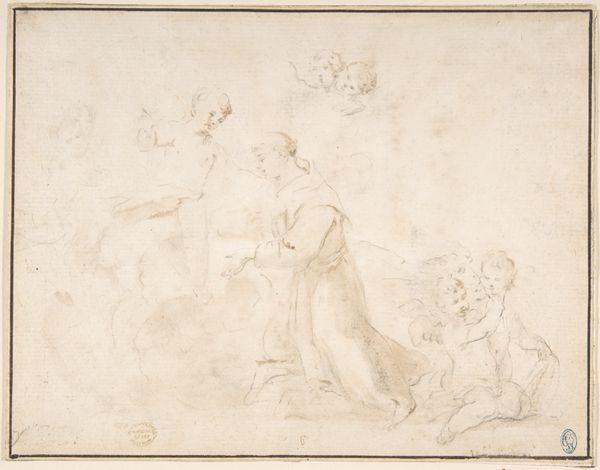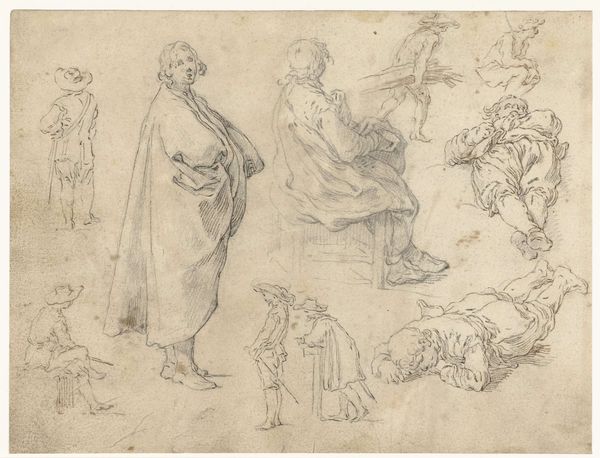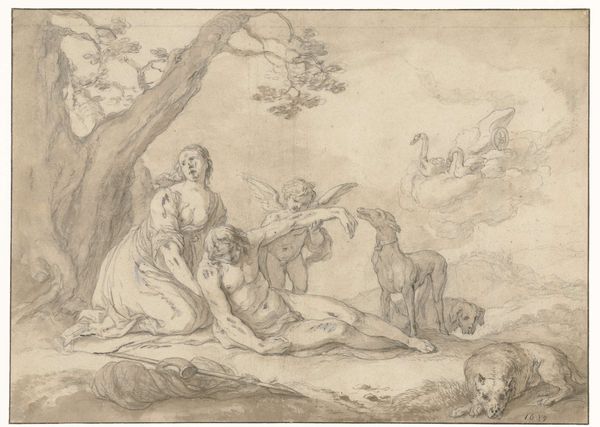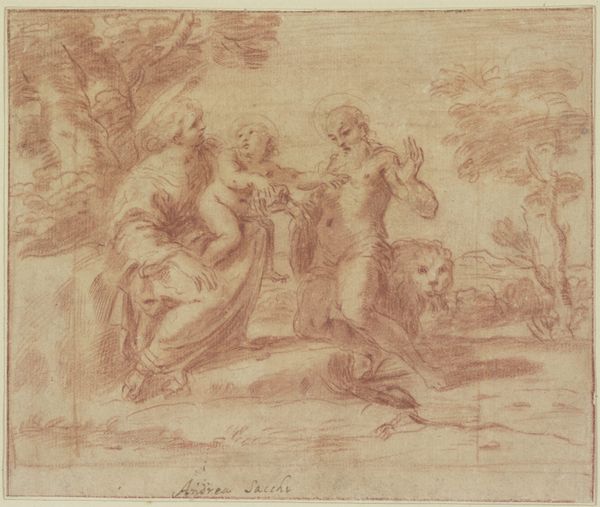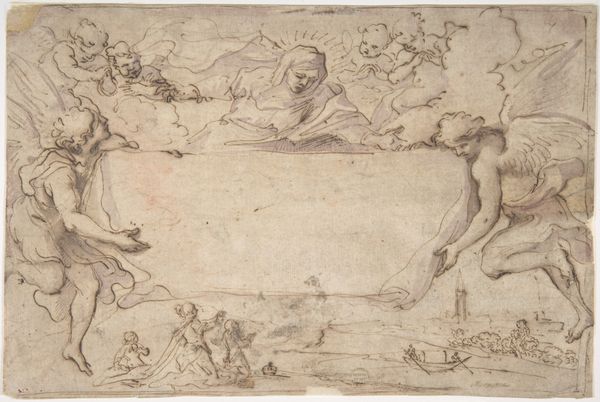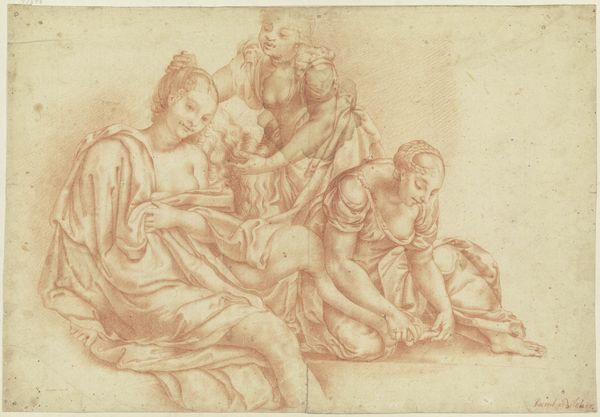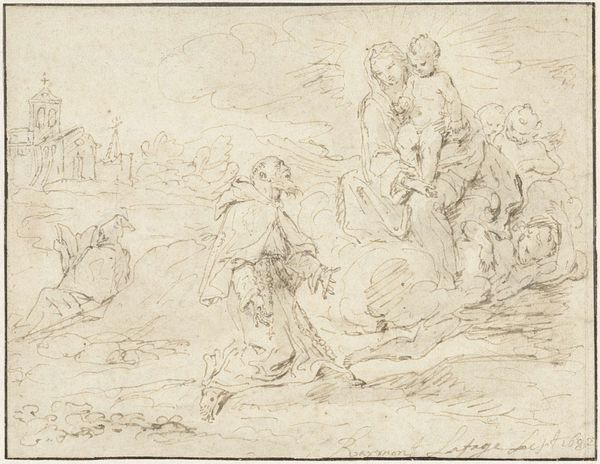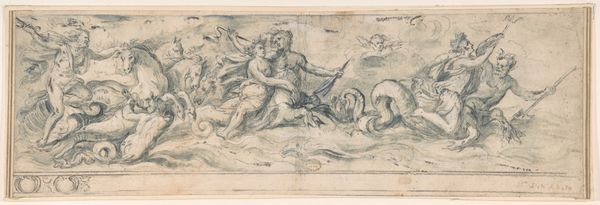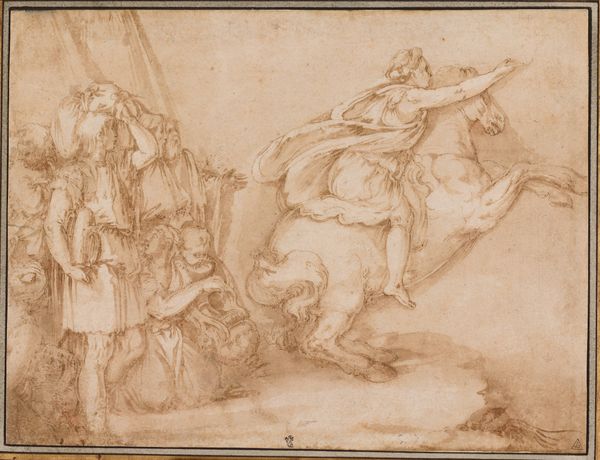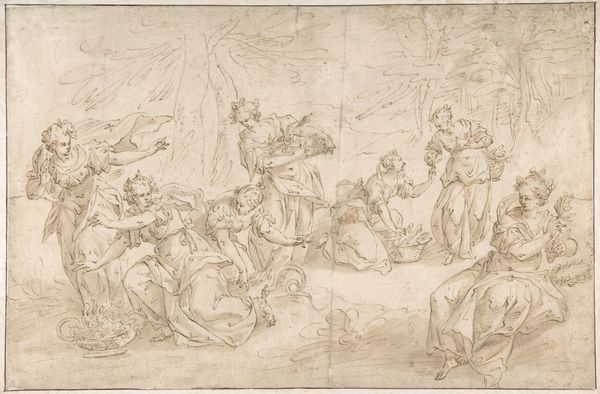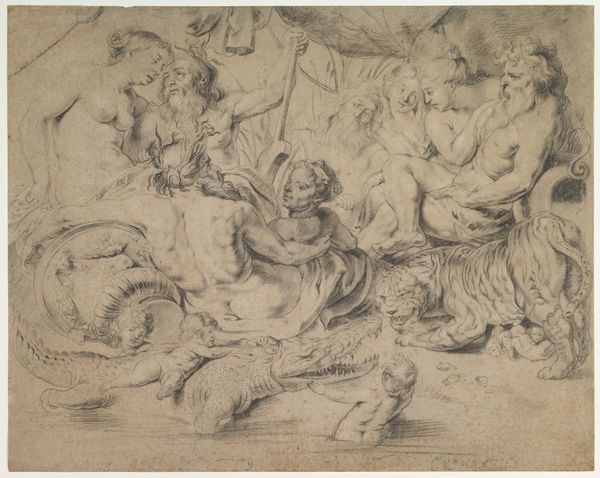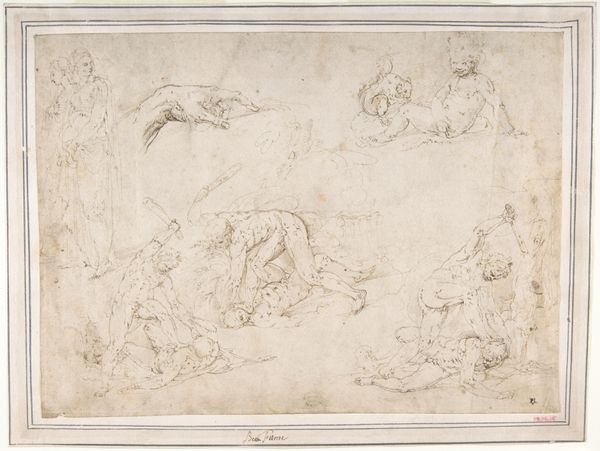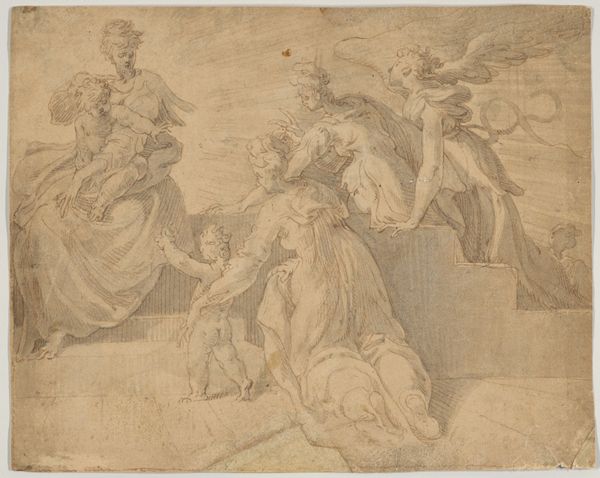
drawing, paper, pencil
#
portrait
#
drawing
#
baroque
#
dutch-golden-age
#
figuration
#
paper
#
pencil
#
genre-painting
Dimensions: height 168 mm, width 221 mm
Copyright: Rijks Museum: Open Domain
Curator: Let's discuss this pencil drawing, "Twee vrouwen en een jongen," or "Two Women and a Boy," created by Abraham Bloemaert around 1625-1629. It's currently housed in the Rijksmuseum. What's your initial read? Editor: There’s a remarkable stillness about it, even with the multiple figures sketched. The light, feathery lines impart a dreamlike quality, as though we’re observing figures from a half-remembered scene. Curator: Bloemaert’s choices in material contribute to that feeling. He opts for the immediacy of pencil on paper, prioritizing efficiency for study, to examine figure relationships with nuanced expression. It suggests a deliberate rejection of more laborious techniques to get his ideas down. Editor: I see an interplay of earthly and spiritual elements within each grouping. Observe how one woman seems to be reading, a representation of piety or knowledge, while others recline and possibly rest, a more quotidian activity. This contrast speaks volumes about the duality of daily life and ideals. Curator: Indeed, but I also consider the socio-economic implications. Bloemaert, as part of the Dutch Golden Age, likely had access to higher quality drawing materials because of burgeoning trade networks. The rising merchant class also created a demand for this style of intimate genre painting. Editor: Consider the symbolism further—perhaps the child represents innocence, a common theme in art, contrasted with the mature contemplation of the women. Are they guardians? Guides? It hints at deeper narratives. Curator: And that prompts consideration about who had access to create and consume images like this. Was it a growing middle class or wealthy elite? Understanding production informs interpretation. The availability of affordable paper facilitated increased artistic output and access. Editor: Seeing it this way allows appreciation beyond mere aesthetics. We can unravel layers of meaning conveyed through universal images, enriching our understanding of human experience captured so elegantly here by Bloemaert. Curator: By looking closely at production and symbolism, both material circumstances and pictorial language of this seemingly simple drawing allows it to speak volumes about its historical moment and humanity.
Comments
No comments
Be the first to comment and join the conversation on the ultimate creative platform.
